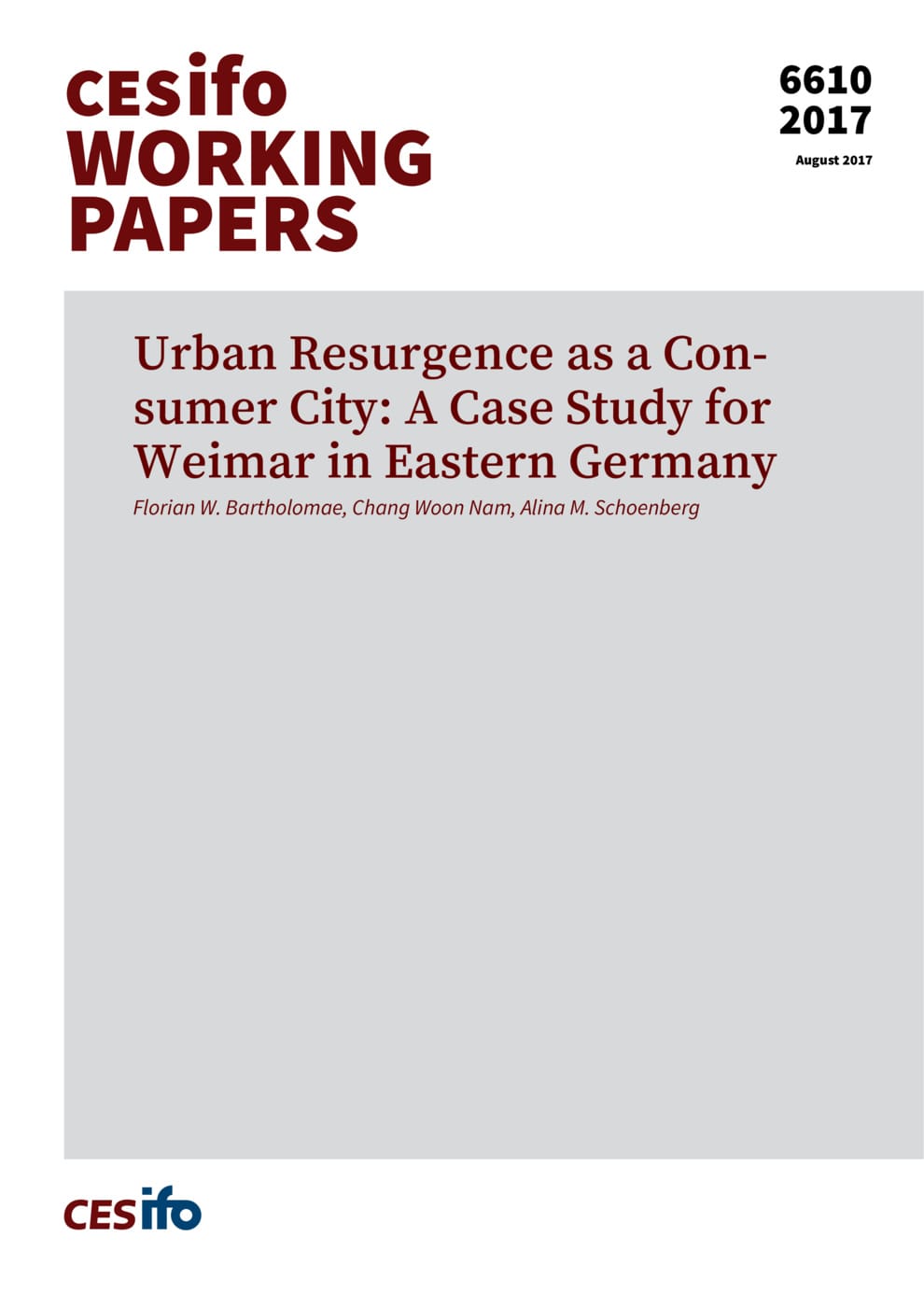Urban Resurgence as a Consumer City: A Case Study for Weimar in Eastern Germany
CESifo, Munich, 2017
CESifo Working Paper No. 6610

Weimar achieved urban recovery as a ‘consumer city’ with sub-brandings like a population magnet with a high living-quality, a cultural city with touristic attractions, and a university city. Its intensive cultural promotion policies combined with urban regeneration programs have contributed to the recent demographic and economic growth. This study demonstrates this success and investigates its sectoral weaknesses compared to other German cities. Weimar needs an optimal mixture of consumption- and production-oriented development strategies to rectify the current structural imbalances and better control those negative impacts caused by a rapidly ageing population. Besides ample presence and intact connectivity of high-tech industries and producer services within a city which enhance R&D, innovation and productivity, Weimar should more seriously consider, when design-ing future development policy, that both urban growth approaches are interrelated: agglomeration generates higher income for the creative class, whereas high urban amenities attract young creative entrepreneurs selecting locations for start-ups.
Fiscal Policy, Macroeconomics and Growth
Industrial Organisation